
Adobe Experience Manager Architect Master
Last Update Nov 4, 2025
Total Questions : 87
We are offering FREE AD0-E117 Adobe exam questions. All you do is to just go and sign up. Give your details, prepare AD0-E117 free exam questions and then go for complete pool of Adobe Experience Manager Architect Master test questions that will help you more.



A media company wants to use AEM as content hub for multiple customer touch points:
• Brand-specific marketing websites hosted on AEM Sites
• Single Page Applications using headless content
• Native mobile applications
• Content offers in Adobe Target
The company wants to manage its content efficiently with its small editor staff. Text should be entered and reviewed only once, then reused for all touch points.
How should an Architect incorporate these requirements into a solution that leverages AEM Sites features?
A)
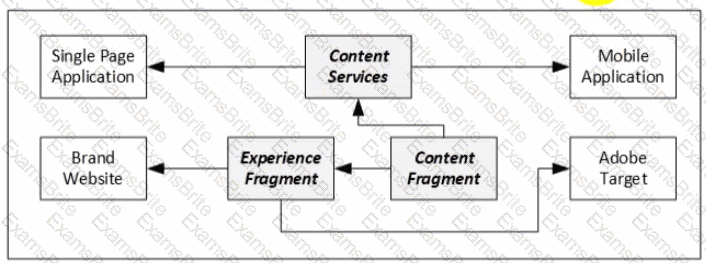
B)
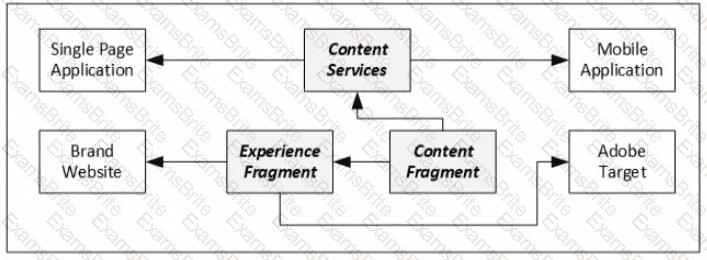
C)
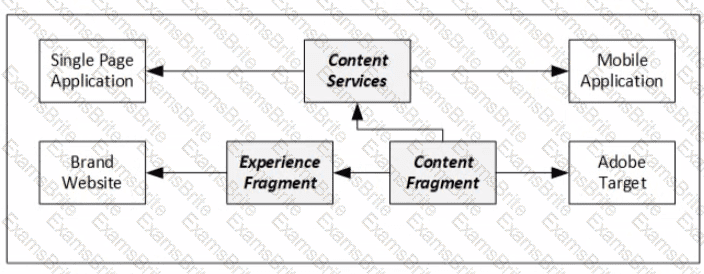
D)
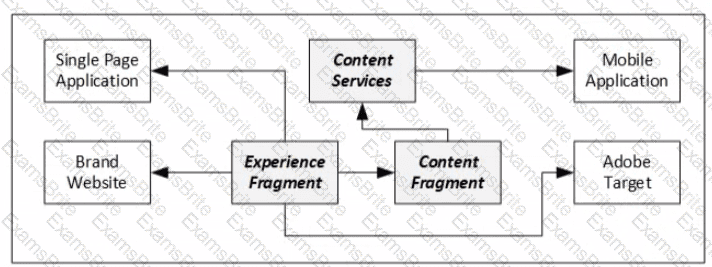
A client is using AEM and wants to make sure they are managing their configurations correctly. Refer to the following requirements:
The client has multiple brands that they will be hosting on a single AEM implementation
The client wants to reuse as much between brands as possible
Each brand needs to be able to override the default values for items like contact us information
The client plans to support multiple languages in multiple regions for each brand
Each brand/language/region combination will have its own set of content approvers used as part of a custom workflow
Which approach should an Architect recommend to manage the client's configurations for AEM?
A client designs a new experience for one of their brand sites with the following parameters:
• The new experience should behave like a desktop application
• There is a lot of dynamic content in the app
• SEO and initial page load are a top concern for the client
• The client's marketing team needs to be able to author the content with a WYSIWYG editor
Which approach should the Architect use to meet these requirements?
In a client's test environment AEM QA Testers from multiple groups and regions are testing and making requests to the AEM application. Due to the sheer number of hosts making connections, an Architect needs a quick and easy way to allow any hosts to make requests to the AEM application.
Which approach should the Architect take to meet this requirement for this non-production environment?
A client wants to enable SSO in the AEM Authoring instance using SAML for the content authors. The client also wants to onboard their marketing team and design team to use AEM. However, these teams use their personal Adobe ID to login to the Creative and Marketing Cloud products such as Analytics and Target on Admin Console. The client wants to enable the usage of company credentials for all their solutions to enforce standardized security policies. What would the architect propose to meet these requirements?
A news agency editor wants to publish news articles to an intermediate Publish (preview) instance for internal review before publishing the article to production Publish instance.
Which two steps should the Architect recommend? (Choose two.)
AEM Site users report that the web content pages render very slowly. An Architect notices that the CPU usages of the AEM Publish instances are spiking and reviews the following entry in the log:
[Frt Nov 27 23:11:00 2019] [I] [pid 16004 (tid 140134145820416)] Current cache hit ratio: 47.94 %
What should the Architect do to increase the dispatcher cache ratio and prevent the AEM Publish CPU usage spikes?
Refer to the exhibit.
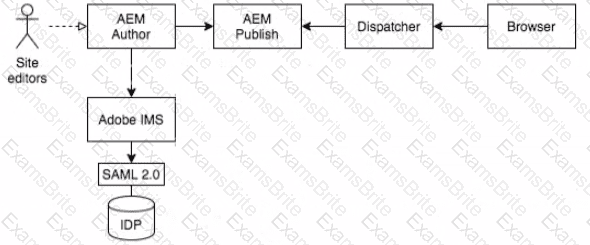
A customer has SSO on its AEM Author environment using Adobe IMS, which is integrated with the customer's IDP using SAML The customer plans to roll out a new secured website on AEM where SSO authentication is required for end users. The end user accounts are also managed in the customer's existing IDP.
How should the Architect set up the authentication for the website?
After building an AEMaaCS website, it was found that non-cached secured static content will put too much load on the servers. How can this secured static content be cached without creating a security concern?
A customer's photo gallery site uses query parameters to filter photo search results. The site experiences high AEM Publish server load when users filter photos on the site. The customer would like to identify the cause of this issue.
What should the Architect investigate first?
During an optimization session, a client using AEM 6.5 mentions that they face challenges with their AEM Author setup. The client has significant repository growth and can see an increased amount of TAR files in the segmentstore on disk. When editors are working, they see that workflows take up more time. The purging of workflows works as expected. Which two optimizations should an Architect suggest to took into and further investigate? (Choose two.)
A client publishes content by a tree activation, which frequently invalidates the page cache in short succession. This causes the visitors to almost always hit an empty cache. The implementation uses a .stat file for invalidation. The client wants to delay the invalidation of cached pages while the publishing is in progress, so that the cached files are served until the invalidation completes. Which AEM dispatcher's feature can the architect propose to delay cache invalidation?
On AEM 6.5, when an editor tries to edit pages on the author, some pages only show a blank screen. Upon inspection of the logs, the following exception is found:
Which action would an architect try to restore functionality to the system without data loss?
A customer is using AEM on AMS as the central content provider for its omnichannel presence with more than 100+ authors working around the clock and 30+ concurrent authors. The customer is happy with the performance of the author server, but they have a critical requirement to guarantee no data loss and quick failover in the event of any author failure. Which deployment strategy would the AEM architect use for the author environment?
A client is modernizing some of their AEM sites to go from static to editable templates so they can use the latest features around has the following parameters:
• The client currently has a dozen static templates that they want to move to editable templates.
• The existing pages use the parsys paragraph system for storing components.
• Each page based on one of the static templates has its own custom properties tab that is unique for that template type.
• The client wants template authors to be able to create the editable templates.
Which approach should an Architect use to meet these requirements?
A website built on AEM Sites displays the company's stock price in the footer of all pages. The stock data is retrieved from a third party REST service using two-way SSL and rendered in an AEM component using HTL During performance testing in the last development sprint it becomes apparent that the third party service sometimes takes up to 30 seconds to respond, which degrades the overall site performance.
How should an Architect address this issue?
A customer has a requirement to allow authors to access AEM with single sign-on. To achieve this an Architect needs to integrate AEM with the customer's identity management system.
Which two actions could an Architect take to meet this requirement? (Choose two.)
An AEM architect working on a large-scale e-commerce project is tasked with creating a prototype solution to showcase a proof of concept (POC) using Adobe Experience Manager (AEM) to manage complex product data. Which method or approach would be most effective in ensuring the success of this POC, while maintaining the client project data structure?
An existing AEM sites platform will receive the latest service pack. The service pack includes functional and non-functional fixes such as security patches. Which action should the Architect take to make sure the update is successful?
An Architect needs to design a deployment process without downtime for end users. The system architecture contains an AEM author, two AEM publishers, two publish Dispatchers, and a centrally managed load balancer. The publishers serve some content that cannot be cached.
Which two actions should the Architect take to meet these requirements? (Choose two.)
A retail customer with an international presence and both in-store and online sales needs a new assets platform. The customer decides to use A£M assets. The customer's sites will continue to run on their proprietary CMS for websites.
The customer wants to be able to scale the platform for spikes in user traffic such as on local sales or online marketing campaigns. Under some circumstances, the customer also has a higher load of editors for a certain period of time.
Which architecture should an Architect use for this business case?
A client requires the ability to create multiple microsites with the same set of components but with different visual variations. The client needs to make sure that an author of a specific microsite is following a specific microsite Style Guide. What approach would the architect take?
An AEM Architect is moving existing content from an on-premise AEM to an AEM Cloud Service instance using the Content Transfer Tool. As part of the initial source preparation, the Architect is going to run the offline compaction on the on-premise AEM.
What other two actions should the Architect do to the on-premise AEM before proceeding with the extraction phase? (Choose two.)
A customer is migrating from their On-Premises AEM 6.4 instances to AEM as a Cloud Service. Next to the required code refactoring, a content migration of approximately 100,000 pages needs to be performed. The customer wants the content freeze period to be limited so that editors can continue to do content actions as long as possible.
Which two recommendations should the Architect make for the migration of the content pages? (Choose two.)
A website built on AEM as a Cloud Service (AEMaaCS) leverages browser caching of JavaScript and CSS files to optimize page load times. After the caching is enabled, QA testers notice that newly delivered components are lacking newly developed features and are missing styling, even hours after their deployment. Further analysis identifies outdated CSS and JavaScript files in the browser cache as the root cause.
What steps would an AEM architect take first to fix this issue?
A company is implementing a new e-commerce site that is expected to get seasonal and flash-sale induced traffic peaks from all over the world. It is projected that a minute of downtime could cause excessive lost revenue. The company management wants to keep resource utilization to optimal levels without experiencing degradation to avoid introducing bugs in the system.
The Architect needs to choose between AEM 6.5 and AEM as Cloud Service.
What are the two most critical non-functional requirements the Architect must consider? (Choose two.)